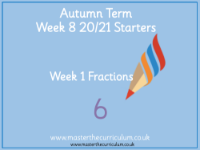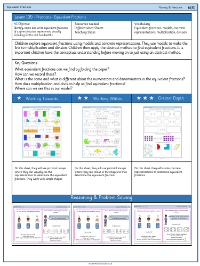Fractions - Equivalent fractions - Planning

Maths Resource Description
The Year 6 Autumn term lesson on Fractions, specifically focusing on equivalent fractions, is designed to help students understand and apply the concept of fractions of equal value. The National Curriculum objectives covered include simplifying fractions using common factors, expressing fractions in the same denomination using common multiples, and comparing and ordering fractions, including those greater than 1. Key vocabulary such as 'common factors', 'common multiples', 'numerator', 'denominator', 'highest common factor (HCF)', 'lowest common multiple (LCM)', and 'equivalent fractions' are introduced to provide a solid foundation for understanding. The lesson starts with a recap of previous learning, followed by activities that engage students in discovering equivalent fractions through visual models and concrete representations. Students fold paper to visually demonstrate equivalent fractions and use multiplication and division to find other pairs of equivalent fractions, reinforcing their understanding of the abstract mathematical concepts.
During the lesson, students work in pairs and small groups to discuss and explore equivalent fractions, using practical challenges and reasoning tasks to deepen their comprehension. The lesson is structured to address different levels of student ability, from those working towards expected levels to those capable of greater depth. Students are encouraged to use pictorial images and concrete representations to visually determine equivalent fractions, with tasks tailored to challenge them appropriately. The lesson also includes a reflection segment where students evaluate what they have learned, the skills they have used, and what they found challenging, ensuring they understand the importance of multiplication and division in finding equivalent fractions. The plenary session focuses on sharing answers, discussing strategies, and clarifying any misconceptions, with an emphasis on the visual link between the models and the mathematical processes used.



